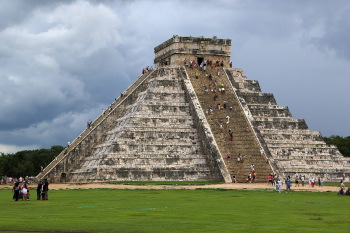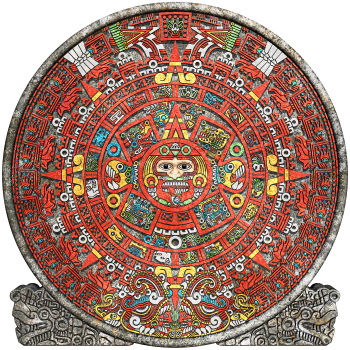

El Castillo. Chichen Itza, Yucatan, Mexico.
This Mesoamerican step pyramid’s platform, along with its four stairways of 91 steps, totals 365, or the number of days in a calendar year.
This Mesoamerican step pyramid’s platform, along with its four stairways of 91 steps, totals 365, or the number of days in a calendar year.

Aztec Calendar.
The Aztec calendar was an adaptation of the Mayan calendar. It consisted of a 365-day agricultural calendar, as well as a 260-day sacred calendar. (This is a digital composite. Color added for visibility.)
The Aztec calendar was an adaptation of the Mayan calendar. It consisted of a 365-day agricultural calendar, as well as a 260-day sacred calendar. (This is a digital composite. Color added for visibility.)
The Maya calendar was adopted by the other Mesoamerican nations, such as the Aztecs and the Toltec, which adopted the mechanics of the calendar unaltered but changed the names of the days of the week and the months. An Aztec calendar stone is shown above right.
The Maya calendar uses three different dating systems in parallel, the Long Count, the Tzolkin (divine calendar), and the Haab (civil calendar). Of these, only the Haab has a direct relationship to the length of the year.
A typical Mayan date looks like this: 12.18.16.2.6, 3 Cimi 4 Zotz.
12.18.16.2.6 is the Long Count date. 3 Cimi is the Tzolkin date. 4 Zotz is the Haab date.

No comments:
Post a Comment